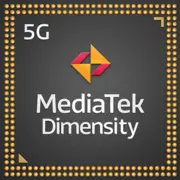MediaTek MT6750

MediaTek MT6750: Review of a Budget Processor in 2025
April 2025
Introduction
In the world of smartphones, the budget segment always remains in demand. The MediaTek MT6750 is one of those processors that has long served as the backbone for entry-level devices. Despite the release of new chips, in 2025, smartphones using the MT6750 can still be found on the market. In this article, we will explore who this processor is suitable for, its strengths and weaknesses, and whether it is worth paying attention to.
Architecture and Process Technology: Outdated but Reliable Foundation
Cores and Frequencies
The MediaTek MT6750 is built on an 8-core architecture using energy-efficient Cortex-A53 cores. The configuration includes two clusters:
- 4 cores with a frequency of 1.5 GHz for everyday tasks;
- 4 cores with a frequency of 1.0 GHz for background processes.
This approach (Big.Little) aims to balance performance and energy savings, but in 2025, this scheme appears archaic. Modern processors have transitioned to Cortex-A55/A75 cores and thinner process technologies.
28 nm Process Technology: What Does It Mean?
The 28-nanometer process technology on which the MT6750 is produced is the main limitation of its capabilities. For comparison, 2025 chips use 5-7 nm processes, which ensure lower heat generation, higher frequencies, and better energy consumption. Due to the 28 nm process, the MT6750 heats up under load and cannot maintain peak performance for long.
GPU Mali-T860 MP2: Graphics for Basic Tasks
The Mali-T860 MP2 graphics accelerator with two computing units is designed for basic tasks:
- Watching videos in FullHD;
- Light 2D games;
- Working with the OS interface.
However, for running modern 3D games (such as Genshin Impact), the GPU's power is insufficient — even at minimum settings, lags may occur.
Performance in Real Tasks: What Can the MT6750 Handle?
Everyday Work
- Social media, messengers, browsers: The processor handles these tasks, but running 5-6 applications simultaneously may cause slowdowns.
- FullHD video: Smooth playback is possible, but HDR or 4K are not supported.
Gaming
- Casual games (Candy Crush, Subway Surfers): Perfectly.
- PUBG Mobile, Call of Duty: Mobile: Will only run at low settings with frame rates up to 25 FPS.
- Modern AAA projects: Incompatible due to GPU limitations.
Artificial Intelligence
The MT6750 lacks a dedicated neural processing unit (NPU), so AI applications (like real-time photo enhancement or voice assistants) run slowly or are completely unavailable.
Energy Consumption and Heating
Smartphones featuring the MT6750 typically have batteries with a capacity of 3000-4000 mAh, which provides 6-8 hours of screen-on time. However, with active use of the camera or navigation, the chip starts to heat up, leading to throttling (frequency reduction).
Integrated Modules: Basic Connectivity Without Frills
- Modem: Supports 4G LTE (no 5G), which is already considered a minimum requirement in 2025. Download speeds of up to 150 Mbps.
- Wi-Fi: Only 802.11n (Wi-Fi 4), limiting speed to 300 Mbps. Modern routers with Wi-Fi 6/7 will work in backward compatibility mode.
- Bluetooth: Version 4.0 — adequate for connecting headphones, but data transfer is slow.
- Navigation: GPS and GLONASS, but without support for Galileo or Beidou.
Comparison with Competitors: Who are the Leaders?
MediaTek Helio G25 (2020):
- 12 nm process technology;
- GPU PowerVR GE8320;
- Better energy efficiency, but similar performance.
Qualcomm Snapdragon 450 (2017):
- 14 nm process technology;
- Adreno 506 — 30% faster than Mali-T860;
- Supports cameras up to 21 MP compared to MT6750’s 16 MP.
Unisoc Tiger T606 (2021):
- 12 nm process technology;
- GPU Mali-G57 MP1 — better optimized for games;
- More relevant in 2025 than the MT6750.
Conclusion: The MT6750 falls short compared to even chips from 2020-2021. Its main advantage is the low cost of devices.
Usage Scenarios: Who is This Processor For?
1. Budget Smartphones: Devices priced at $100-150 (e.g., Tecno Spark 10 or Xiaomi Redmi 9A).
2. Backup Gadgets: Phones for travels or as a spare option.
3. Elderly Users: Simple interface and basic functionality.
4. Children’s Devices: Inexpensive models with parental controls.
Photography and Videography
The MT6750 supports cameras up to 16 MP and video recording at 1080p@30 FPS. It is not suitable for low-light photography or using AI filters.
Pros and Cons
Pros:
- Low smartphone prices;
- Sufficient performance for basic tasks;
- Energy efficiency with moderate use.
Cons:
- Outdated process technology (28 nm);
- No support for 5G and Wi-Fi 5/6;
- Weak GPU for gaming.
Practical Tips When Choosing
1. RAM: Opt for models with 3-4 GB of RAM — this will reduce the risk of "freezes."
2. Battery: Aim for at least 4000 mAh to compensate for the inefficient chip.
3. Camera: Don’t expect miracles — even 13 MP with good software can deliver acceptable shots.
4. Brand: Stick with proven brands (Xiaomi, Realme, Tecno) as they optimize software better.
Final Conclusion: Who is the MT6750 Suitable For?
This processor is a choice for those who:
- Are looking for the cheapest smartphone;
- Do not play demanding games;
- Use their phone for calls, messaging, and social media.
Main Benefits:
- Devices starting at $100;
- Reliability (the chip has been proven over the years);
- Compactness — smartphones with the MT6750 often have small screens (5-6 inches).
However, if your budget allows you to spend $50-70 more, it’s better to choose a device with Snapdragon 4 Gen 2 or MediaTek Dimensity 700 — they offer 5G, better cameras, and up-to-date hardware.
Conclusion
In 2025, the MediaTek MT6750 is a symbol of the era of budget technology from the late 2010s. It is suitable for those who need a phone "here and now" without unnecessary expenses. But remember: for a little extra money, you can get a device that will last longer and not disappoint in critical moments.
Basic
4x 1 GHz – Cortex-A53
GPU Specifications
Connectivity
Memory Specifications
Miscellaneous
Benchmarks
Compared to Other SoC
Share in social media
Or Link To Us
<a href="https://cputronic.com/en/soc/mediatek-mt6750" target="_blank">MediaTek MT6750</a>